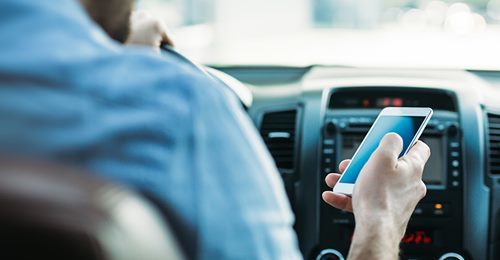
The modern world is full of distractions. With the allure of notifications, text messages, and apps constantly there to break our focus, it is no wonder that it’s so difficult to cut distractions from your commute.
However, over 3,400 people were killed in distracted driving-related incidents in 2015, which amounts to nearly 10 people per day in the United States alone. Even worse, distracted driving is a completely preventable problem – if all of us just practiced safer driving habits and removed potential distractions, this number could be so much lower.
Here are nine tips you can follow to stay safe on the road.
1. Stop using your hands-free device
Talking on the phone isn’t safe, even if it’s done with a hands-free device. Studies show chatting on the phone – even a hands-free listening device – reduces your field of vision and your ability to process moving imagery. If you need to take a call, find a safe area to pull over.
2. Turn off your phone* or put it away
Power down your phone before starting your vehicle. At the very least, turn off the ringer and put the phone out of reach. You’ll avoid interruption from any message notifications. You can also block out driving time on your calendar or set automatic responses to let people know you’ll be driving. Social media alerts or a text isn’t worth a potential accident or even worse — your life.
*The one caveat to this tip is if you are using the Progressive Snapshot® Mobile App to personalize your rate based on your actual driving. The Snapshot® Mobile App requires your phone to be on to work. It is also a good idea to place your phone out of reach in the glove compartment or the backseat.
3. Keep important items within reach
Place your toll ticket, cash, purse or whatever else you may need to access while behind the wheel within close reach. You’ll more easily focus on the road knowing you don’t need to dig for these items if you need them on your commute.
4. Pull over to eat
Your chances of being in an accident increase by 80% when eating and driving. Stop in a rest area to have a snack or eat in the drive-thru parking lot. As an added bonus, you’ll also reduce the risk of staining your clothes or spilling your drink!
5. Be mindful of strong emotions
Strong positive or negative emotions can be distracting. Take a few moments to process your feelings before hopping behind the wheel. Replaying stressful scenarios or even daydreaming can divert your attention from the task at hand, increasing your chances of an accident.
6. Turn down your music
It’s tough not to crank the volume when your favorite tunes come on. Avoid temptation and keep the stereo volume low enough to be aware of your surroundings. Loud music can cause you to lose focus on the road or miss other potential warning signs of an accident, like screeching brakes.
7. Rest regularly
Stop pushing through exhaustion. Driving while tired raises your chance of a crash by increasing reaction time and impairing your ability to make quick decisions. Pull off at a rest stop or parking lot and take a quick nap before heading on your way.
8. Program your route before you leave
Set your GPS to your desired destination before hitting the road. Adjust the volume accordingly and position the device where you can easily see it without taking your eyes off the road. It’ll be easier to focus on your driving, and you’re more likely to reach your destination safely.
9. Get ready at home
Fixing your hair, makeup, shaving, or even clipping your nails on your commute might save you a couple of minutes in the morning, but it could cost you your life. Keep the road safe and practice your personal care routine at home or in the restroom at your workplace.
Over 16% of the 391,000 injuries resulting from motor vehicle accidents in 2015 were caused by distracted drivers. Pay attention to the road and commit to creating a safer experience for yourself and fellow motorists.
